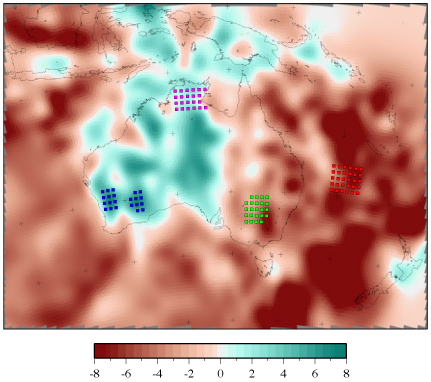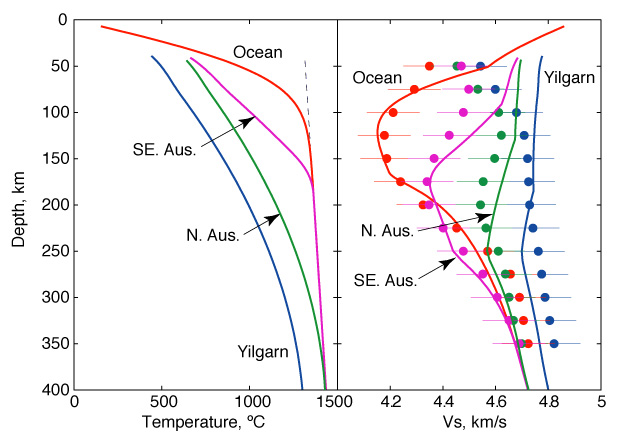Modeling of Seismic Properties
Forced torsional oscillation experiments at temperatures up to 1300°C and periods from 1 to 1000s demonstrate the importance of anelastic behavior for seimic wave propagation and attenuation. In addition to temperature and frequency dependence, the experiments also show a grain size dependence. Application of the experimental data to the upper mantle reproduces the depth and age dependence of the low velocity zone beneath ocean basisns and confirms its absence beneath cold continental cratons. (Faul and Jackson, 2005).
 |
 |
Tomographic image of Australia at 200 km depth showing the location of the geotherms and velocity-depth profiles on the right. Shear wave velocity variations in % (from Fishwick et al., EPSL 2004). |
Geotherms (left) and corresponding calculated velocity depth profiles (solid lines) compared to the Fishwick et al. model (dots with uncertainty range). |
Revised fit from Jackson and Faul, PEPI, 2010
This paper contains revisions of the 2005 fit that include improved accounting for the foil interfaces in the torsion assembly. A brief text describing the implementation of the fit in J&F10 can be found here: AnElasticPeak.pdf
An archive of matlab scripts implementing the fit can be found here: JF10Fit.zip